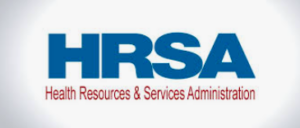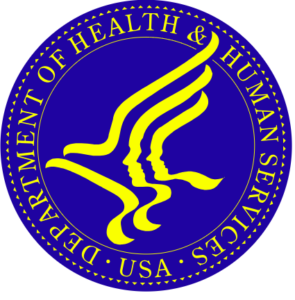- CMS: Medicare Program; Implementation of Prior Authorization for Select Services for the Wasteful and Inappropriate Services Reduction (WISeR) Model
- Public Inspection: CMS: Medicare Program: Implementation of Prior Authorization for Select Services for the Wasteful and Inappropriate Services Reduction Model
- CMS: Secretarial Comments on the CBE's (Battelle Memorial Institute) 2024 Activities: Report to Congress and the Secretary of the Department of Health and Human Services
- HHS: Patient Protection and Affordable Care Act: Marketplace Integrity and Affordability
- HRSA Announces Action to Lower Out-of-Pocket Costs for Life-Saving Medications at Health Centers Nationwide
- Public Inspection: HHS: Patient Protection and Affordable Care Act: Marketplace Integrity and Affordability
- Increased Risk of Cyber Threats Against Healthcare and Public Health Sector
- Eight Hospitals Selected for First Cohort of Rural Hospital Stabilization Program
- Announcing the 2030 Census Disclosure Avoidance Research Program
- CMS: Medicare Program; Hospital Inpatient Prospective Payment Systems for Acute Care Hospitals and the Long-Term Care Hospital Prospective Payment System and Policy Changes and Fiscal Year 2026 Rates; Requirements for Quality Programs; and Other Policy Changes; Correction
- CMS: Medicare Program; Hospital Inpatient Prospective Payment Systems for Acute Care Hospitals and the Long-Term Care Hospital Prospective Payment System and Policy Changes and Fiscal Year 2026 Rates; Requirements for Quality Programs; and Other Policy Changes; Correction
- CMS: Medicare and Medicaid Programs; Contract Year 2026 Policy and Technical Changes to the Medicare Advantage Program, Medicare Prescription Drug Benefit Program, Medicare Cost Plan Program, and Programs of All-Inclusive Care for the Elderly; Correction
- CMS: Medicare and Medicaid Programs; Contract Year 2026 Policy and Technical Changes to the Medicare Advantage Program, Medicare Prescription Drug Benefit Program, Medicare Cost Plan Program, and Programs of All-Inclusive Care for the Elderly; Correction
- CMS: Medicare Program; Prospective Payment System and Consolidated Billing for Skilled Nursing Facilities; Updates to the Quality Reporting Program for Federal Fiscal Year 2026
- CMS: Medicare Program; FY 2026 Hospice Wage Index and Payment Rate Update and Hospice Quality Reporting Program Requirements
Change Healthcare Breach Notifications Are Going Out
On Thursday, June 20, Change Healthcare started sending out breach notifications to affected customers. In addition, they have updated the Change Healthcare website with a HIPAA Substitute Notice. It is important to note that the Department of Health and Human Services said on May 31 that Change can be the notifying entity, however, per the National Association of Community Health Centers (NACHC), it’s on the covered entity (health center) to reach out to Change to delegate the tasks of providing the required HIPAA breach notifications on their behalf. Change plans to start sending actual letters to the affected individuals themselves in late July, though the company noted it may not have addresses for everyone. Exposed data could include contact information, health insurance details, medical information like diagnoses and test results, billing and payment information and personal details like Social Security numbers or ID numbers
HRSA Substance Use Disorder Treatment and Recovery Loan Repayment Program
 The Substance Use Disorder Treatment and Recovery (STAR) Loan Repayment Program is accepting applications through June 27, 7:30 pm. Eligible substance use disorder (SUD) treatment clinicians and community health workers can apply to the Substance Use Disorder Treatment and Recovery (STAR) Loan Repayment Program. HRSA can provide up to $250,000 in educational loan repayment.
The Substance Use Disorder Treatment and Recovery (STAR) Loan Repayment Program is accepting applications through June 27, 7:30 pm. Eligible substance use disorder (SUD) treatment clinicians and community health workers can apply to the Substance Use Disorder Treatment and Recovery (STAR) Loan Repayment Program. HRSA can provide up to $250,000 in educational loan repayment.
Have You Seen the Trends in Physician Compensation?
 Doximity, a digital platform and community for U.S. medical professionals, recently conducted a physician compensation study, surveying nearly 150,000 physicians over a five-year period to gain insights into physician compensation trends and critical challenges facing the physician workforce. Did you know the average pay for doctors increased nearly 6% in 2023? If you want to see how your health center’s compensation compares to the national average, the Doximity report is available for you to view for free.
Doximity, a digital platform and community for U.S. medical professionals, recently conducted a physician compensation study, surveying nearly 150,000 physicians over a five-year period to gain insights into physician compensation trends and critical challenges facing the physician workforce. Did you know the average pay for doctors increased nearly 6% in 2023? If you want to see how your health center’s compensation compares to the national average, the Doximity report is available for you to view for free.
Health Care in America Is Deeply Unequal
![]() Axios writes that health care in America is deeply unequal, and it might get worse. That matters because all of the innovation in the world won’t make any difference to patients if it’s unaffordable or inaccessible. “It’s not only inequities in access to the system, but then also differential experiences even within the system,” said Samantha Artiga, vice president and director of the Racial Equity and Health Policy Program at KFF. When you look at health outcomes, “you will see persistent and long-standing disparities in health … really from the beginning of life to end of life.” These disparities are evident in insurance, hospitals, prescription drugs, access, aging, mental health, addiction, workforce, and emerging technologies – all of which add up to inequity in life expectancy. Learn more.
Axios writes that health care in America is deeply unequal, and it might get worse. That matters because all of the innovation in the world won’t make any difference to patients if it’s unaffordable or inaccessible. “It’s not only inequities in access to the system, but then also differential experiences even within the system,” said Samantha Artiga, vice president and director of the Racial Equity and Health Policy Program at KFF. When you look at health outcomes, “you will see persistent and long-standing disparities in health … really from the beginning of life to end of life.” These disparities are evident in insurance, hospitals, prescription drugs, access, aging, mental health, addiction, workforce, and emerging technologies – all of which add up to inequity in life expectancy. Learn more.
FY 2025 Budget Period Progress Report Non-Competing Continuation Released for January 1 Budget Period Starts
 The Health Resources and Services Administration (HRSA) has released the FY 2025 Budget Period Progress Report (BPR) Non-Competing Continuation (5-H80-25-001) for Health Center Program award recipients with a January 1 budget period start date. These award recipients have a BPR submission available for completion in EHBs with a deadline of 5:00 pm on Friday, August 16. Technical assistance materials and deadlines for all FY 2025 BPRs are available on the BPR TA webpage.
The Health Resources and Services Administration (HRSA) has released the FY 2025 Budget Period Progress Report (BPR) Non-Competing Continuation (5-H80-25-001) for Health Center Program award recipients with a January 1 budget period start date. These award recipients have a BPR submission available for completion in EHBs with a deadline of 5:00 pm on Friday, August 16. Technical assistance materials and deadlines for all FY 2025 BPRs are available on the BPR TA webpage.
Court Rules Against HHS Online Tracking Bulletin
 In December 2022, the U.S. Department of Health and Human Services (HHS) released its online tracking bulletin which was revised in March of this year. This bulletin restricted healthcare providers from using standard third-party web technologies that capture IP addresses on portions of their public-facing webpages. In response to the bulletin, many health centers removed website analytics like Google Analytics from their websites causing them to lose the ability to track the traffic and engagement on their own websites. Last week, a United States District Court Judge in Texas ruled in favor of the American Hospital Association (AHA), Texas Hospital Association, and hospital plaintiffs, who began their lawsuit in early 2024. The judge agreed that the HHS bulletin was unlawful and vacated the March 2024 revised online tracking bulletin. Read the full press release about the ruling on the AHA’s website.
In December 2022, the U.S. Department of Health and Human Services (HHS) released its online tracking bulletin which was revised in March of this year. This bulletin restricted healthcare providers from using standard third-party web technologies that capture IP addresses on portions of their public-facing webpages. In response to the bulletin, many health centers removed website analytics like Google Analytics from their websites causing them to lose the ability to track the traffic and engagement on their own websites. Last week, a United States District Court Judge in Texas ruled in favor of the American Hospital Association (AHA), Texas Hospital Association, and hospital plaintiffs, who began their lawsuit in early 2024. The judge agreed that the HHS bulletin was unlawful and vacated the March 2024 revised online tracking bulletin. Read the full press release about the ruling on the AHA’s website.
New Read: States With the Most Rural Hospital Closures in the Past 20 Years
From Becker’s Financial Management
Since January 2005, 192 rural hospitals have closed or converted, according to data compiled by the University of North Carolina’s Cecil G. Sheps Center for Health Services Research.
Of those hospitals, 105 have completely closed, and 87 have converted, meaning the facilities no longer provide inpatient services, but continue to provide some services, such as primary care, skilled nursing care or long-term care. Since 2020, 36 hospitals have closed or converted. Find the list here.
Here are the states along with their number of rural hospital closures or conversions since 2005:
Alabama
- Closure: 5
- Conversion: 2
Alaska
- Closure: 1
Arkansas
- Closure: 2
Arizona
- Closure: 2
- Conversion: 2
California
- Closure: 3
- Conversion: 6
Florida
- Closure: 4
- Conversion: 4
Georgia
- Closure: 2
- Conversion: 7
Illinois
- Closure: 1
- Conversion: 3
Indiana
- Closure: 2
- Conversion: 2
Iowa
- Closure: 1
Kansas
- Closure: 5
- Conversion: 5
Kentucky
- Closure: 4
Louisiana
- Closure: 2
Maine
- Closure: 2
- Conversion: 1
Maryland
- Closure: 1
Michigan
- Closure: 2
- Conversion: 2
Minnesota
- Closure: 3
- Conversion: 3
Mississippi
- Closure: 3
- Conversion: 3
Missouri
- Closure: 9
- Conversion: 1
Nebraska
- Closure: 2
Nevada
- Closure: 1
- Conversion: 1
New Jersey
- Closure: 1
New Mexico
- Closure: 1
New York
- Closure: 3
- Conversion: 2
North Carolina
- Closure: 6
- Conversion: 6
North Dakota
- Conversion: 1
Ohio
- Closure: 1
- Conversion: 2
Oklahoma
- Closure: 5
- Conversion: 3
Pennsylvania
- Closure: 3
- Conversion: 3
South Carolina
- Conversion: 4
South Dakota
- Closure: 2
- Conversion: 1
Tennessee
- Closure: 7
- Conversion: 8
Texas
- Closure: 14
- Conversion: 11
Virginia
- Closure: 1
- Conversion: 1
Washington
- Conversion: 1
West Virginia
- Closure: 3
- Conversion: 2
Wisconsin
- Closure: 1
Independent Review Process Overturns Over 100 Health Insurance Denials in Pennsylvania
The Pennsylvania Insurance Department’s (PID) Independent external review established by Act 146 of 2022 allowed PID to oversee the process of reviewing eligibility determinations. After customers complete an internal appeal process through their insurer for denied services, they can submit a review request online to PID at no cost detailing why their health plan should cover a service, treatment, or benefit. Once the request for external review is received by PID and processed, consumers will know within five business days if their denial is eligible for review. More than 100 Pennsylvanians successfully appealed denied services in the first six months of the launch of the process. Consumers with questions about this process should go to PID’s Consumer Services Bureau at pa.gov/reviewmyclaim or by calling 1-877-881-6388.
U.S. Senate Workforce Innovation Act Bill to be Introduced Soon
 There is credible news that a Senate version of the Workforce Innovation Act (H.R. 7307) will likely be introduced in early July by Senator Wyden (D-OR) and Senator Blackburn (R-TN). Like the House bill, the Senate bill would scale up community-based workforce programs, including partnerships between Community Health Centers and schools, preceptorships, and career laddering programs. NACHC is currently working to add additional Republican cosponsors to the House bill and Republican co-leads to the Senate bill.
There is credible news that a Senate version of the Workforce Innovation Act (H.R. 7307) will likely be introduced in early July by Senator Wyden (D-OR) and Senator Blackburn (R-TN). Like the House bill, the Senate bill would scale up community-based workforce programs, including partnerships between Community Health Centers and schools, preceptorships, and career laddering programs. NACHC is currently working to add additional Republican cosponsors to the House bill and Republican co-leads to the Senate bill.
State’s Labor Force Hits New High, Unemployment Stays Stable
Pennsylvania’s unemployment rate remained unchanged over the month at 3.4% in May, the Department of Labor and Industry announced last Friday. This was the eighth consecutive month at 3.4%. The U.S. unemployment rate rose by one-tenth of a percentage point from its April rate to 4.0%. The state’s unemployment rate was one-tenth of a percentage point above its May 2023 level of 3.3%, while the national rate was up three-tenths of a percentage point over the year. Pennsylvania’s civilian labor force – the estimated number of residents working or looking for work – was up 9,000 over the month and hit a record high of 6.6 million. Pennsylvania’s total nonfarm jobs were up 19,800 over the month to a record high of 6,167,700, setting the tenth consecutive record high for Pennsylvania’s jobs count.
